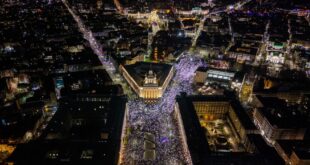 A Sarajevo-based NGO that has been compiling a database of victims killed during the conflict in Bosnia and Herzegovina (BiH) released the results last week, after three years of data collection.
A Sarajevo-based NGO that has been compiling a database of victims killed during the conflict in Bosnia and Herzegovina (BiH) released the results last week, after three years of data collection.
As of this month, 97,207 people are known to have died; 59% were military casualties, and 41% were civilians, the Research and Documentation Centre said. The number is considerably lower than prior estimates reported in domestic and international media. These were based on figures circulated immediately after the war and ranged between 150,000 and 250,000 dead.
However, the centre stressed, the data is not complete and the figures will likely rise as the process of exhumation and identification continues. The database includes precise details about each victim, including name, ethnicity, cause and place of death, gender and age.
According to the NGO, more than 46% of the victims were killed during 1992, the first year of fighting. The country lost about 2.22% of its residents; 65.8% of the victims were Bosniaks, 25.6% Serbs and 8% Croats. Among civilian victims, more than 20% were women and around 3.5% were children. Another 16,662 people remain missing.
The researchers have faced a number of problems in compiling the database. For example, in some cases soldiers were killed while on leave or having returned to civilian life, but the families requested a military burial and the deaths were classified as military. In the case of the Srebrenica massacre, many were registered at two locations — Tuzla and Srebrenica.
The data suggests that 6,886 people were killed at Srebrenica in July 1995, the NGO said. The atrocity is considered Europe’s worst since World War II and has been ruled a genocide by the International Court of Justice.
Project director Mirsad Tokaca says the work of compiling such a database should have been done by the state. Instead, he said, it had to be done by an NGO with financial assistance from Norway. The reason, he said, is that many politicians still want to manipulate casualty figures for political reasons.
Much needs to be done to rebuild trust and reach final reconciliation, the centre emphasises. Although BiH is now in its 12th year of peace, successive governments have taken almost no concrete steps to push the reconciliation process forward. The one and only attempt was the formation of an eight-member team, consisting of political party representatives, at the request of the American Peace Institute in October 2005.
The team prepared a text intended to serve as the basis for a Commission for Truth and Reconciliation. It has been agreed that historians, philosophers and demographics specialists should form the commission, on condition that they are not politically engaged and had no involvement in the conflict.
However, the bill establishing the commission is simply collecting dust. It is up to the BiH Council of Ministers to guide it though the parliamentary process.
 Eurasia Press & News
Eurasia Press & News

